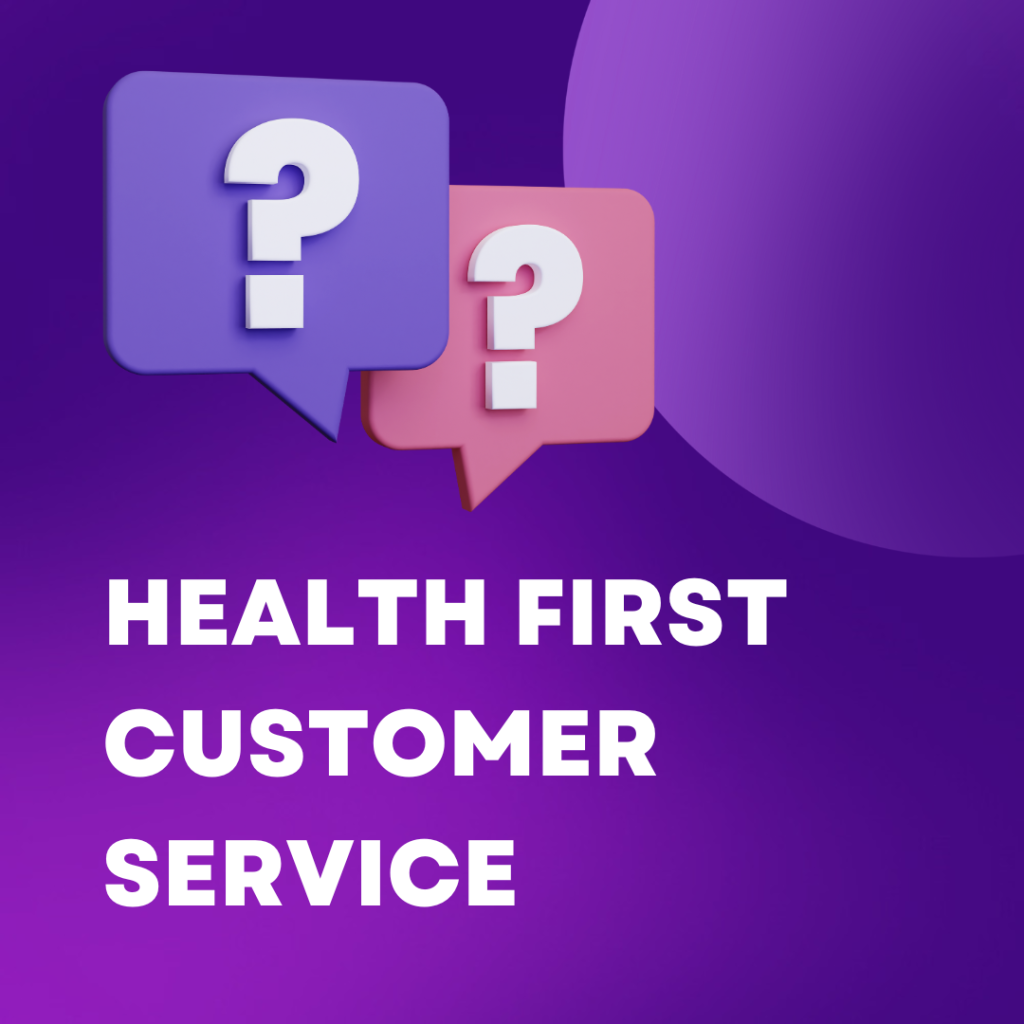Health First Customer Service

Introduction
In today’s world, customer service is more than just solving problems or answering questions. It is about treating people with care, respect, and dignity. The phrase “Health First Customer Service” means putting people’s health, well-being, and safety at the center of every customer interaction.
Whether it is in hospitals, clinics, pharmacies, gyms, wellness centers, or even online health services, customer service plays a huge role. People are not only looking for medical help—they want to feel heard, valued, and respected. Health First Customer Service is about providing the best medical care and the best human care.
In this article, we will look at what Health First Customer Service means, why it is important, how it works, and how organizations can build a culture that truly cares for people’s health. We will also share practical tips, examples, and real-life stories that show how small actions in customer service can lead to big improvements in health outcomes.
What Does “Health First Customer Service” Mean?
Health First Customer Service simply means putting health and care above everything else when serving customers. It is a customer service style where safety, empathy, and wellness come before profit, speed, or numbers.
For example:
A pharmacy that takes extra time to explain medicine to an elderly customer, instead of rushing.
A hospital that makes sure patients feel emotionally supported, not just physically treated.
A wellness app that checks on users’ mental health, not only their exercise data.
This approach ensures that every customer feels respected, cared for, and safe.
Why Is Health First Customer Service Important?
There are many reasons why Health First Customer Service is vital:
Health is priceless. Unlike products or gadgets, health cannot simply be replaced. Mistakes in health services can cost lives.
Trust is everything. When people go to a hospital or clinic, they are often scared, weak, or vulnerable. They must trust the staff to care for them.
Emotional support improves healing. Studies show that patients recover faster when they feel respected, understood, and supported.
Loyalty grows from care. When customers feel cared for, they return, recommend the service, and build long-term relationships.
In short, Health First Customer Service is not only about good manners; it is about saving lives and creating better outcomes.
Key Principles of Health First Customer Service
- Empathy
Empathy means putting yourself in the customer’s shoes. In healthcare, this could mean understanding the fear of a patient waiting for test results or the confusion of a parent with a sick child.
- Patience
Customers in health-related fields may feel stressed, in pain, or anxious. Patience is essential to serve them without rushing.
- Clear Communication
Medical terms can be confusing. Good customer service explains things in simple words. For example, instead of saying “hypertension,” staff might say “high blood pressure.”
- Privacy and Respect
People’s health is deeply personal. Respecting privacy builds trust. Confidentiality is a key part of Health First service.
- Safety First
Every action must prioritize safety—whether it is sanitizing medical equipment, checking expiry dates on medicines, or giving clear instructions on usage.
Health First Customer Service in Hospitals
Hospitals are the first place most people think of when talking about health services. Here are ways hospitals can practice Health First Customer Service:
Reception and Front Desk: Greet patients warmly, reduce waiting stress, and guide them clearly to the right department.
Doctors and Nurses: Listen carefully, explain treatment options, and treat every patient with compassion.
Support Staff: From janitors to cafeteria staff, everyone contributes to creating a healing environment.
Example: A hospital where nurses not only check vitals but also ask patients how they are feeling emotionally creates a more healing atmosphere.
Health First Customer Service in Pharmacies
Pharmacies play a crucial role because they deal directly with patients daily. Health First service here means:
Explaining how and when to take medicines.
Warning about possible side effects.
Making sure customers understand their prescriptions.
Offering kind words to someone who looks worried or unwell.
A simple smile or gentle tone can change a customer’s day.
Health First Customer Service in Fitness and Wellness Centers
Gyms, yoga studios, and wellness apps also need Health First Customer Service. Here, the focus is on prevention and lifestyle support.
Examples:
Trainers guiding beginners carefully to avoid injuries.
Nutritionists listening to clients’ unique needs instead of giving “one-size-fits-all” advice.
Apps that encourage balance, not extreme diets or over-exercise.
Wellness is about body, mind, and spirit. Customer service should reflect that.
Health First Customer Service in Mental Health
Mental health services are growing worldwide. Here, Health First service is even more critical because customers may be emotionally fragile.
Important practices:
Active Listening – letting clients talk without interruption.
Compassionate Tone – speaking with kindness, never judgment.
Confidentiality – ensuring safe spaces for sharing personal struggles.
When customer service respects mental health, people feel empowered to seek help instead of hiding their struggles.
Technology and Health First Customer Service
With online consultations, telemedicine, and health apps, technology is part of modern healthcare. But technology must be used with compassion.
Examples:
Chatbots that provide basic guidance but also connect to real people when needed.
Appointment systems that are simple for elderly users.
Follow-up messages that check on patients after treatment.
Technology should support human care, not replace it.
Building a Culture of Health First Customer Service
Organizations can build a culture of Health First service by:
Training Staff – teaching empathy, communication, and patience.
Rewarding Compassion – celebrating staff who go the extra mile.
Listening to Feedback – learning from patients and customers to improve.
Leading by Example – managers and leaders showing care in their own service.
When the culture values health first, everyone benefits—staff, customers, and communities.
Real-Life Examples
Example 1: A Nurse’s Patience
A nurse noticed a patient crying before surgery. Instead of ignoring, she sat down, held their hand, and comforted them. Later, the patient said that small act gave them courage.
Example 2: A Pharmacist’s Advice
An elderly man was about to take two medicines that should not be mixed. The pharmacist noticed and carefully explained the risk, preventing a serious accident.
Example 3: A Fitness Coach’s Care
A young woman wanted to lose weight quickly. Instead of pushing extreme workouts, the coach taught her about balance and long-term health.
These stories show how Health First Customer Service saves lives and builds trust.
Benefits of Health First Customer Service
Better Health Outcomes – Patients recover faster and avoid mistakes.
Stronger Trust – Customers feel safe returning.
Positive Reputation – Word of mouth spreads quickly in healthcare.
Employee Satisfaction – Staff feel proud when their work saves lives.
When health comes first, everyone wins.
Challenges and How to Overcome Them
Of course, Health First Customer Service is not easy. There are challenges like:
Time Pressure – Healthcare is often busy.
Limited Staff – Not enough people to give personal attention.
Burnout – Healthcare workers can feel exhausted.
Solutions include better training, support systems for staff, using technology wisely, and creating teamwork where everyone shares the responsibility of care.
Conclusion
Health First Customer Service is more than a slogan. It is a commitment to treat people with dignity, care, and respect while protecting their health. From hospitals to pharmacies, gyms to apps, and mental health to technology, putting health first ensures that customer service is not only effective but truly life-changing.
When organizations and individuals embrace this approach, they do more than provide service—they bring healing, hope, and humanity into every interaction.


